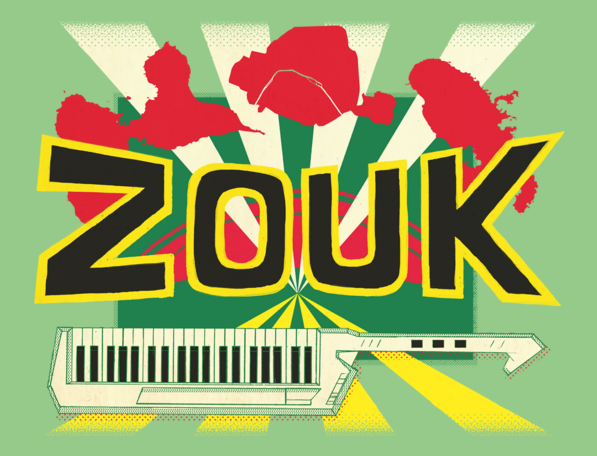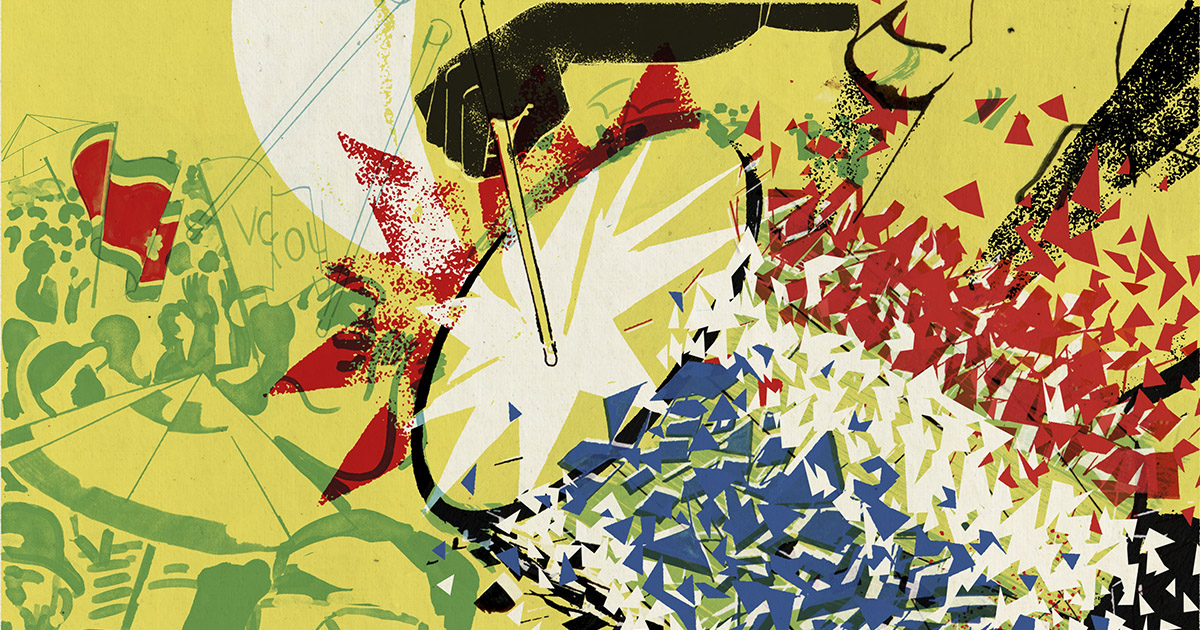Studio Caroline: The Parisian Laboratory of African Pop
Paris in the ’80s was arguably one of the largest global hubs for African music, playing host to musicians from across the African diaspora and generating an enormous volume of releases that few other cities could rival at the time. The situation came about early in the decade, through a perfect storm of affordable studio spaces, newly relaxed broadcasting laws that saw a flourishing of commercial and community radio stations and a record-hungry public with the necessary disposal income to fuel the musical output. At the end of the ’70s, producers and musicians from across the diaspora were setting up shop in the city, selling records from across Europe and Africa as well as the lucrative “DOM/TOM” market – the French territories of Guadeloupe, Martinique, Guyana and Réunion where many African artists would also tour.
Although the broad term “African music” overgeneralises what is evidently the product of many countries that are culturally, economically, linguistically and musically distinct, the meetings and collaborations of musicians and players from countries like Congo, Cameroon, Cote d’Ivoire and Senegal led to the development of a geographically specific aesthetic emanating from Paris – pulling in influences, techniques and styles from across Africa, the Caribbean and America to create a kind of Pan-African pop music that resonated far beyond the city itself. The development of this sound took place in the many dedicated small studios in Paris and its suburbs, producing records for the clubs of Paris and the African diaspora away from the large budgets of major labels keen to promote the “world music” genre. Studio Caroline occupies a unique place in the story of this Parisian sound, acting as a testing ground for the collaborations and experiments that defined a large part of the decade’s African pop music.
I’d have people coming from across Africa every weekend. They didn’t know the Eiffel Tower, but they knew Studio Caroline and the white sorcerer.
Hidden away in the basement of an old boulangerie at 46 Rue Haxo, in an unassuming corner of the 20th Arrondissement, Studio Caroline opened its doors in the summer of 1980. Owned and operated by erstwhile singer and studio engineer Jacky Reggan, the studio and its place in Parisian music history came into being almost by chance. Reggan had been a part of the variété (French pop) scene in the 1970s, scoring a hit in 1973 with the saccharine ballad “Premier Baiser, Premiére Larme,” but as the domestic pop market took a beating from the disco wave in the latter part of the ’70s, he put his stage career on pause to focus on writing material for other singers. Hearing about a studio that had gone into liquidation, he borrowed some money to buy the equipment and improve his demos. He quickly found, though, that ballad-writing alone wasn’t paying the bills, so he started to rent out his work space to pay back the loan.
Over the first few months the studio hosted a range of small local acts recording their own demos, but towards the end of 1980, David Ouattara – Congolese record producer and owner of the Afro Rythmes label and shop in the 18th Arrondissement – started to use the space, with one pivotal early session for soon-to-be mega star Kanda Bongo Man unintentionally laying the foundations for the studio’s pivotal role in Afro-Parisian music history. Despite having only the vaguest knowledge of African music, Jacky Reggan ran the session and mixed the record. “Iyolé” – the lead track on the resulting album – was a massive hit, selling impressive quantities across the diaspora and putting Studio Caroline and Reggan’s clean, stripped-back mixing style firmly on the map. African music – principally Congolese rumba and soukous – became the studio’s stock in trade.
According to Reggan, “Iyolé is why I started to work on a lot of African productions. People started to call me the ‘sorcier mundélé,’ the white sorcerer, and come to the studio. At first it was people from Paris, but after a while I’d have people coming from across Africa every weekend. They came specifically to Paris – they didn’t know the Eiffel Tower, but they knew Studio Caroline and the white sorcerer.”
Iyolé and other early Afro Rythmes sessions laid down a kind of blueprint for the burgeoning sound of soukous, taken from the French word “secouer,” meaning “to shake.” While traditional Congolese rumba is split into two parts – a slow introduction focused on the lyrics, followed by a faster guitar and drum break called the “sebene” – audiences outside the two Congo’s didn’t necessarily understand the Lingala lyrics. Keen to broaden their appeal, a group of Paris-based producers and artists – David Outtara and Kanda Bongo among them – largely dispensed with the slow intro and jumped straight into the uptempo instrumental portion of the track, giving birth to a new style that would go on to reverberate much further afield than its initial place of origin.
The new sound was a hit, and as the soukous wave took hold Studio Caroline was booked solid for months on end, with sessions running day and night, seven days a week. The budget and production schedules of visiting musicians were limited, so recording sessions were crammed in as tightly as possible. Producers like Marcel Perse from Paris’s Sonodisc and Cameroon’s Isidore Tamwo would record three or four albums in a week, albums that would be swiftly mixed in the studio, then released either back home or on one of the many small labels crowding the Paris market. The diverse clientele was dominated both by musicians who had moved to Paris from across Africa and the Caribbean to further their careers, and visiting stars from Francophone Africa, taking advantage of the studios and resident musicians to record albums for release abroad. These two loose groups worked together symbiotically, bringing together ideas and influences in a two-way exchange that threw up new styles, pulling in arrangements and production techniques from American and Caribbean music (equal parts Earth, Wind and Fire and the burgeoning zouk sound of Jacob Desvarieux and Kassav’) and marrying them to the rumba and makossa rhythms from Congo and Cameroon.
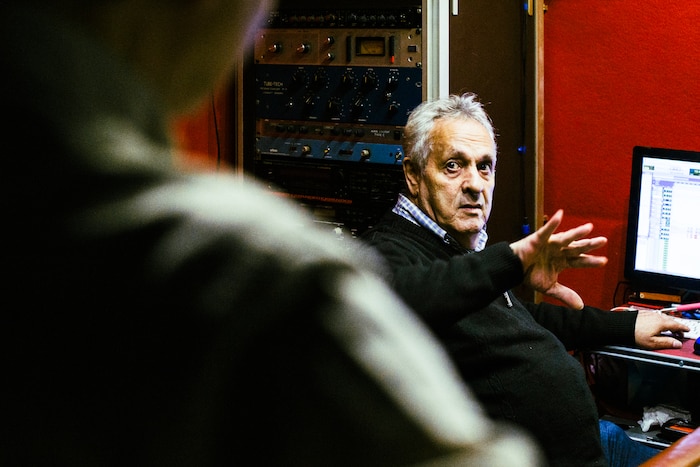


Most of the sessions at Studio Caroline saw the same familiar faces backing the visiting musicians, with Paris-based Congolese players and studio regulars like Bopol Mansiamina, Daly Kimoko and Rigo Star soon forming their own groups and releasing a flurry of records that would codify the Paris soukous style. But the studio did not deal exclusively in soukous and rumba. In terms of musical trends in the early ’80s, Reggan remembers that “The records were bought in the African community and even by white people – white people were into it – but you have to be careful when you talk about ‘African,’ because someone from Cameroon has nothing in common with someone from Congo. It’s like Germany, Spain or Italy – different cultures. Paris was kind of the meeting point of African music.
Due to space and budget limitations, few records were recorded straight through as an ensemble. Drums and bass would be tracked, then keys and synths, percussion and backing vocals, before the singer came to finish the tracks. Caroline served as a hang-out for musicians waiting to record their parts while drumming up future session work. Many collaborations were forged in the tiny basement space, sometimes to the detriment of the sessions then in progress.
Reggan remembers an incident with the bassist Ngouma Lokito, a mainstay of many Caroline sessions from the mid-’80s. “Ngouma used to come to the studio with his wife, who would bring food for the musicians. He was a small guy, but his wife was pretty big. One day he had the misfortune to be caught out eyeing up some of the younger backing singers during a session – he had to run fast to get away from his wife, who chased him down the street!”
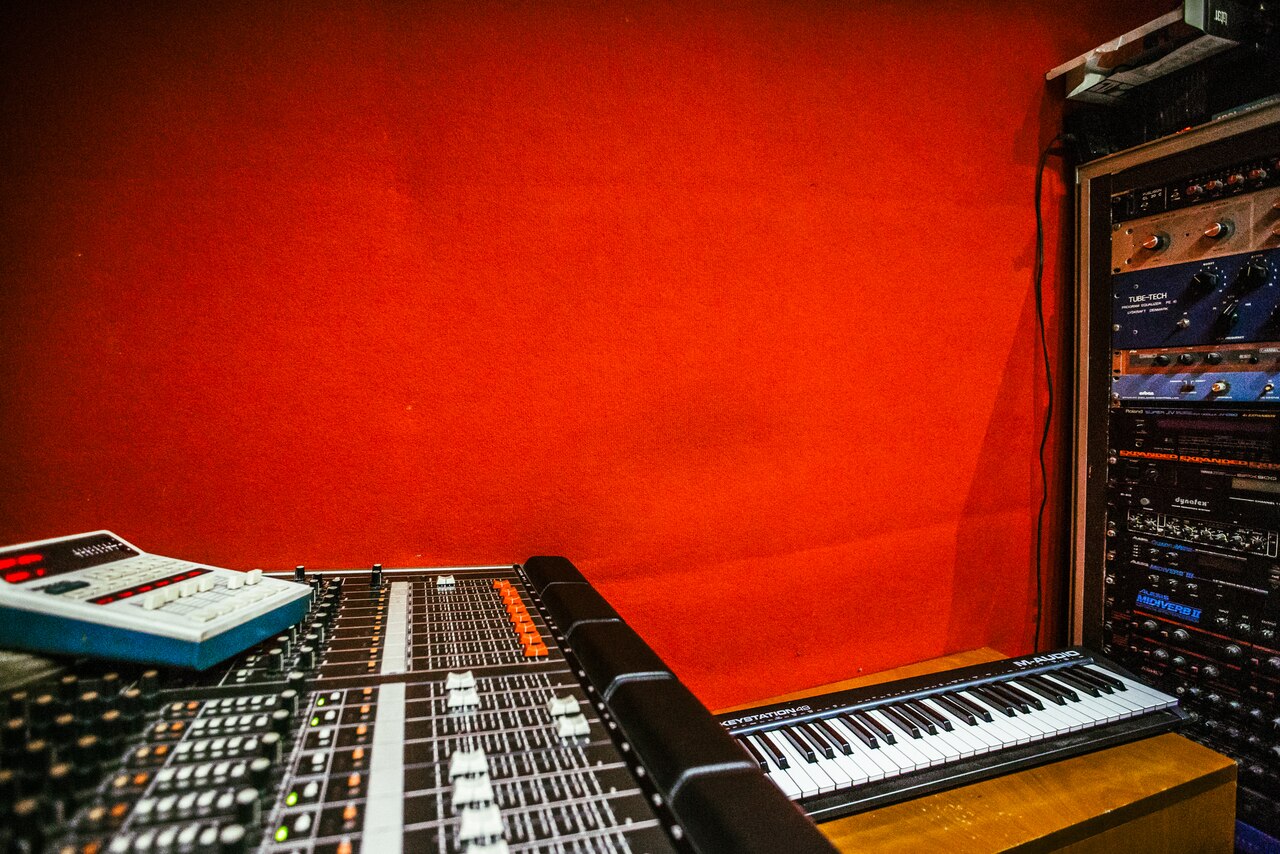
Despite the sometimes raucous atmosphere, the studio consistently turned out records that had exactly the right sound for the nightclubs and radios vital to their success – a deceptively complicated process, and one that was not necessarily reproducible in higher-end studios that were less in tune with what was needed in the mix. Reggan explains that, “For the mix the kick drum and bass are the foundation – after the vocals, of course. It’s difficult to mix Congolese music because there are so many instruments and they all need to be heard – however, music from Cameroon is much more stripped back. Caribbean music tends to have a bigger sound because the kick plays with the bass in a different way and there aren’t 50 instruments playing at the same time. That’s why when people tried to use bigger studios with famous engineers they’d always end up coming back here.”
Artists were competing for impact in the clubs and on the radio and needed a production sound that would be on a par with American-produced disco and R&B, as well as the hip-hop records that were beginning to travel across the Atlantic. Many started to turn towards the newly-available drum machines and synths on the market, initially using just electronic pads like the Simmons, then graduating to drum machines like the LinnDrum as the technology became more affordable. The new technology meant shorter studio times and savings on already stretched budgets, but the electronic instruments also led to a fundamental change in the music, as the swing of live drums could often not be replicated by a sequencer. Drummer Denis Hekimian – veteran of innumerable Caroline sessions in the ’80s – remembers: “I used to play a lot of makossa, but when we started using things like the LinnDrum the sequencer would self-correct to the internal clock. We lost the swing of the live makossa and it was replaced by a straight 4/4 kick.”
Live drummers were slowly pushed out, and by the tail end of the ’80s drum machines had become firmly embedded in the soukous and Afropop sonic palette. Once again, Studio Caroline was responsible for another style-defining hit: Aurlus Mabele’s 1986 anthem “Femme Ivoirienne,” produced by Jimmy Houetino. “The tweeters had blown on the day, so I couldn’t hear the highs properly,” says Jacky Reggan. “I ended up pushing the percussion and the treble much higher than I would have normally, and we ended up with Aurlus Mabele’s biggest hit. Just goes to show broken speakers can be good sometimes.”
“Femme Ivoirienne” spawned a legion of imitations, becoming a reference point for practically all the producers and musicians using Studio Caroline. Eddy Gustave – owner of the prolific Eddy’Son label – would brandish a cassette of “Femme Ivoirienne” every time he came to the studio and implore Reggan to make him the same track again.
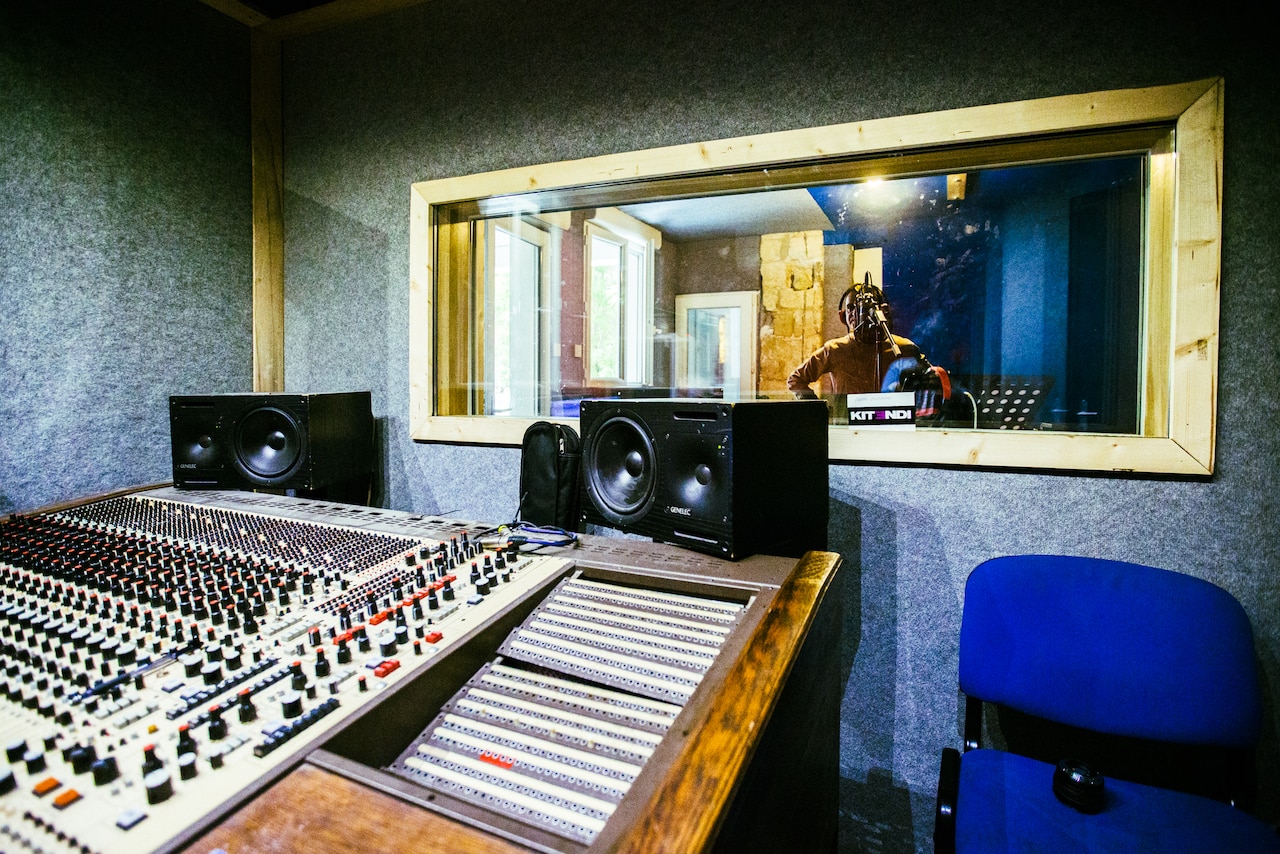
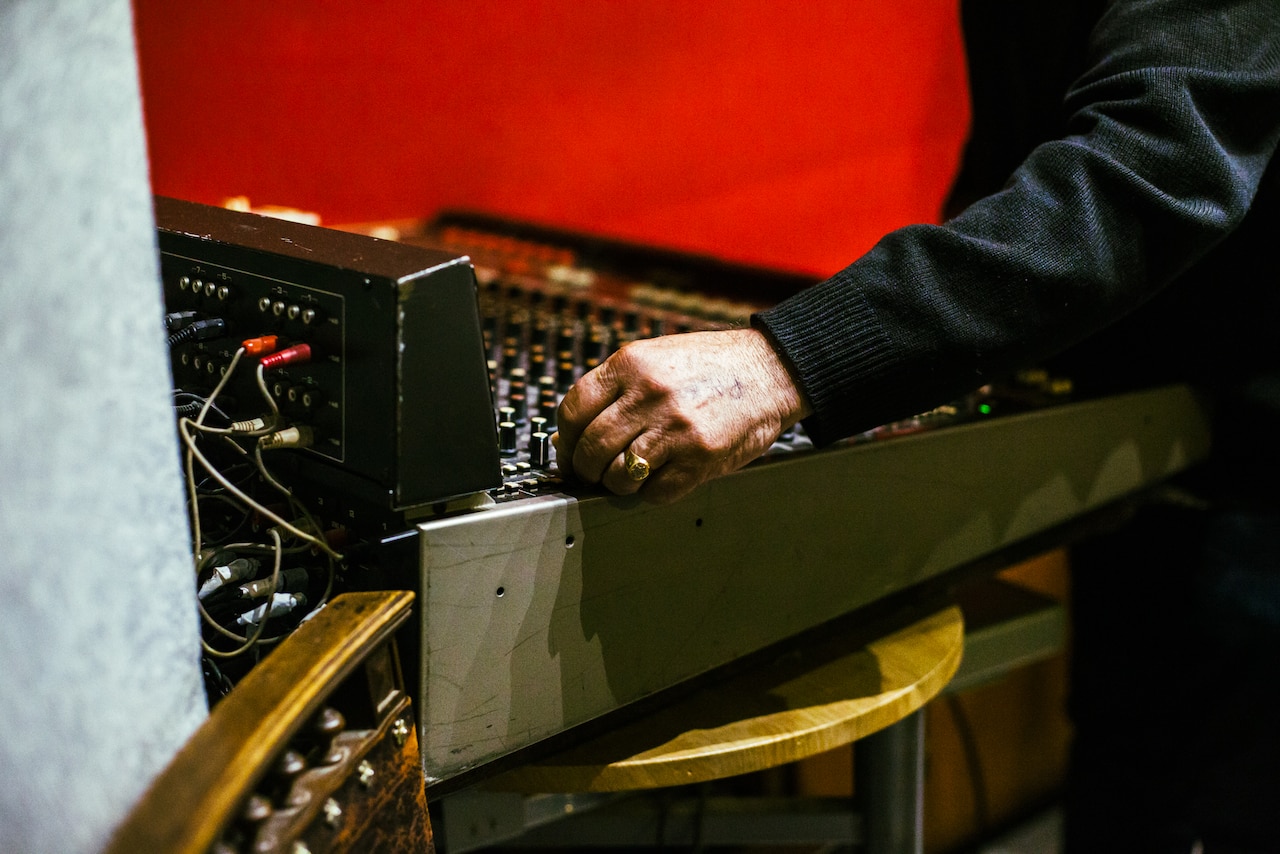
After nearly a decade in the cramped basement near the Porte des Lilas, Reggan made the move to Montreuil in 1990, renting a much larger space on Rue Etienne Marcel behind the shopping centre at the Porte de Montreuil, on the dividing line between Paris and its suburbs. The studio was rechristened Melissa Music, and the mixing desk was upgraded to a Trident. Two neighbouring spaces in the same building were occupied by smaller studios – Studio Cameroun and Studio Vegas, mainly specialising in Ivoirian music and coupé décalé – and the sessions continued.
“Because there were all three studios, the guys used to come to the studio to hang out even if they weren’t recording,” remembers Reggan. “So any musician, no matter where they came from – be it Cote d’Ivoire, Guinea, Mali, Congo – everyone would meet at the studio. There was a big Malian foyer [social and housing centre] down the road, so the musicians would pick up food and bring it back to the studio, and it was there that they would exchange ideas and make connections. The music was very mixed at the time.”
Although the soukous craze was on the wane, visiting Congolese stars like Koffi Olomide and Papa Wemba were still using the studio and brought a different atmosphere to the sessions, capitalising on the increasing popularity of a particularly Congolese trend known as “mabanga,” something that would yet again affect the output of Studio Caroline.
Songs just became lists of names. No one cared about the lyrics or the melody, just the names.
Originating in Kinshasa, mabanga is the practice of paying to have your name included in a track, initially as a shout-out over the guitar-and-drum sebene, then developing into entire songs dedicated to a particular patron. Although never written down, there was an accepted sliding scale of payments for shout-outs in songs, from the equivalent of 100 dollars for a simple namecheck up to several thousand for a song entirely dedicated to the buyer. Singer and underworld figure Stervos Niarcos would even write love songs but leave the names blank on purpose; the song would then be previewed in the studio and people would bid for the honour of having their name included. These mabanga sessions were so successful that when Koffi Olomide – regarded as the king of mabanga – recorded at the studio, there would be upwards of 100 people crowded in the space and out into the street, either trying to buy a spot in a song or hanging around to make sure that the service they had paid for would be provided. “It’s a pity,” says Reggan, “songs just became lists of names. No one cared about the lyrics or the melody, just the names. After that the Ivoirian music took over with what they ended up calling coupé décalé, taking bits from Angolan music, Cameroonian music, and hype on the microphone. At the moment, it’s the Nigerians that are running things.”
Studio Caroline lasted through all of these shifts – from rumba to soukous, through coupé décalé, mabanga, hip-hop and more. But after 23 years in Montreuil, in 2013 Jacky Reggan finally relocated to a smaller space in Montrouge, in the south of Paris. Still, the studio runs sessions every week, even contributing to a belated resurgence of classic rumba, now known as “génerique,” in Kinshasha. It’s yet another chapter in the story of a studio still proud of its place at the center of Paris’s complex musical and social history.
Header image © Sarah Bastin
